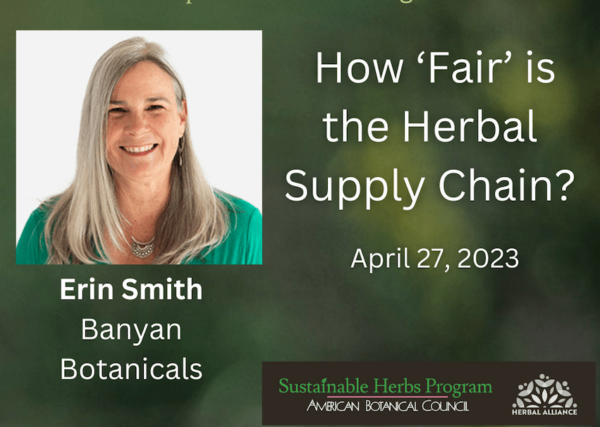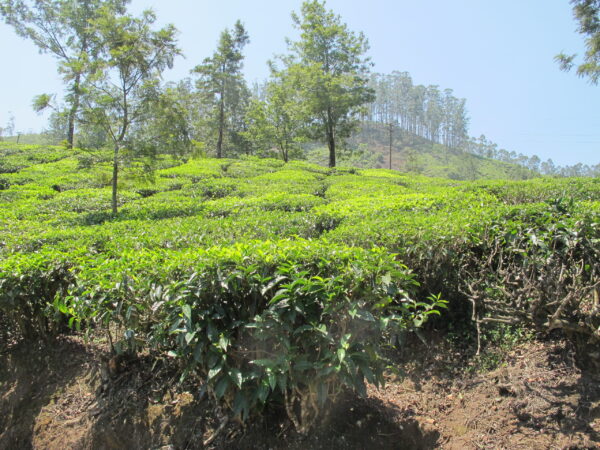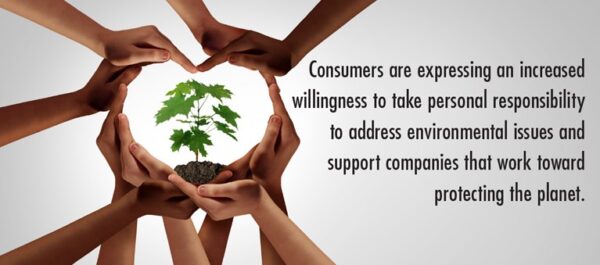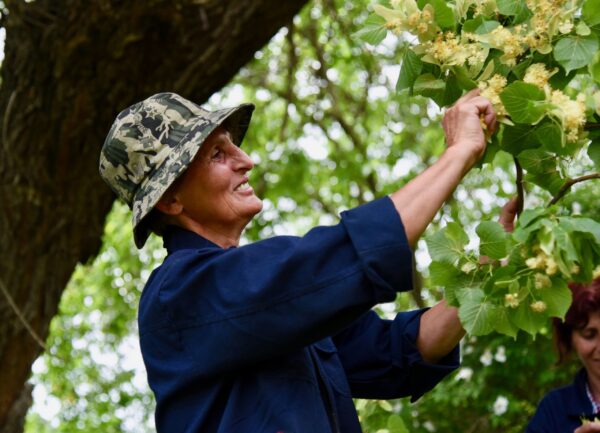Biodiversity and Wild Herbs
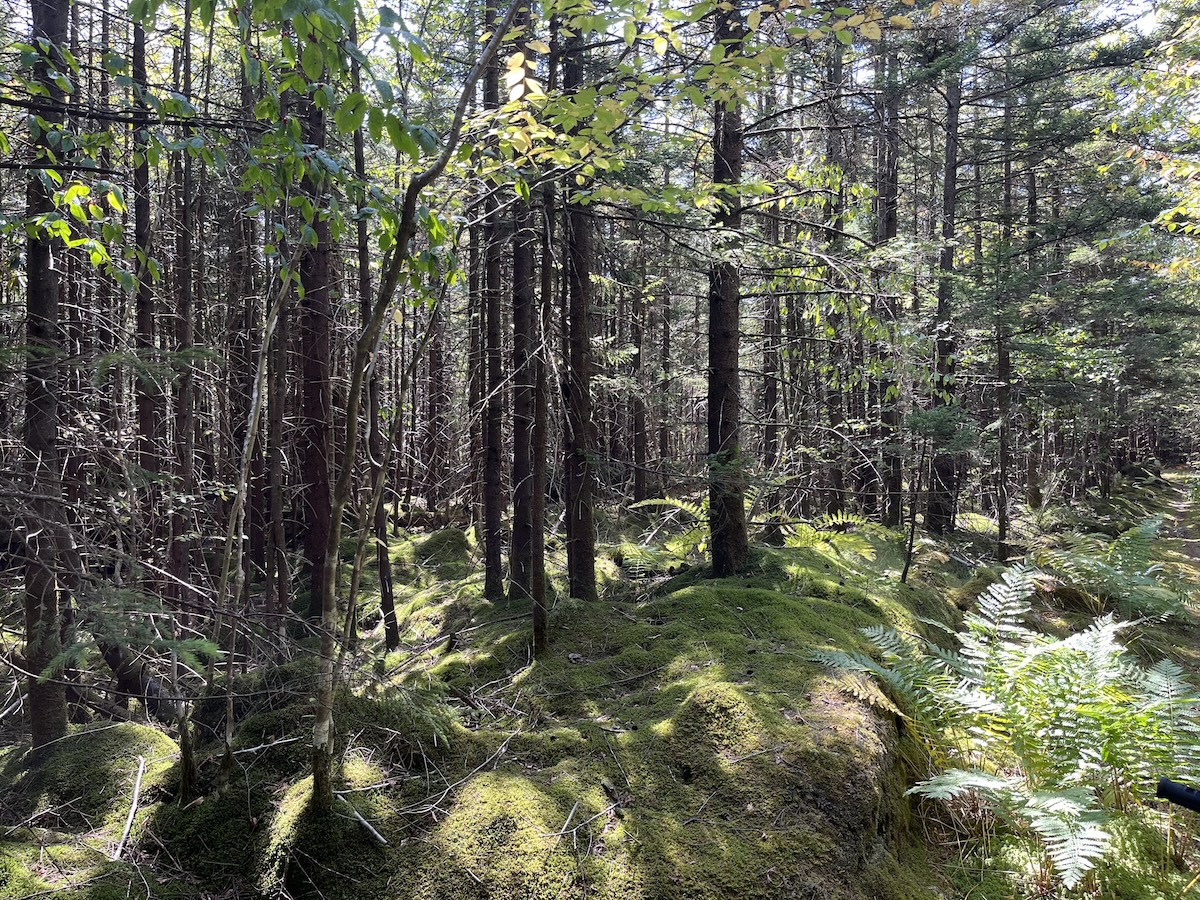
Challenges to Wild Harvesting
Contextualizing Questions and Answers
Q: How many medicinal herbs in commerce are sourced from the wild?
Q: How many have been assessed for their conservation status?
Q: Who are the wild harvesters?
Q: Are wild harvesters paid fairly?

Diving Deep
What is At Stake
Over-harvesting
About two-thirds of herbal medicine species in commerce are sourced from the wild. Only 21% of these species have been assessed for conservation status and 9% of assessed species are considered threatened with extinction (Schindler et al., 2022, ix).
Urban Migration
Equally important, in many places, rural migration to urban areas threatens the long-term viability of the botanical industry.
Traditional Knowledge
Wild collecting is hard work. Fewer people are interested in collecting herbs. As younger generations move to the cities, the traditional knowledge of these plants and sustainable harvesting techniques are being lost. When generation after generation harvests the same plants from the same ‘general’ area, they learn practices to steward those plants. Otherwise, they would not be able to support their families through the decades. Rural-urban migration is a risk not only to the supply of medicinal plants. This traditional knowledge is also at risk.
The Opportunity
In theory, wild harvesting presents a unique opportunity to protect biodiversity and support marginalized communities. By providing alternative income streams, it can help preserve natural habitats that might otherwise be converted to agricultural land or human settlements.
Achieving these impacts depends on three critical factors: maintaining healthy ecosystems; making wild plant collection an attractive livelihood; and ensuring the health of harvested plant populations. Too often these factors aren’t met in practice. Some reasons for this include:
Price gaps between what wild harvesters and primary processing companies need to provide sustainably harvested botanicals and what the industry is able/willing to pay;
Low quantities so that even if a buyer pays higher prices, the quantities are too small to have an impact;
Changing ownership of buying companies which leads to shifting priorities and less investment in social and environmental sustainability.
WHAT TO DO
“I became interested in developing standards for wild collection because I became tired of seeing products in the market that claimed to be ‘ethically wildcrafted.’ If you call the company and you ask, how did you verify that, by what standards? They didn’t have any evidence to support the claim. Have those companies done a full survey of the collection area over many years? Do they have statistics on the regrowth? Do they know how much has been taken out? Do they know the effect on related species? Have they looked at it carefully? And in many cases, the answer to all of these questions is no.” — Josef Brinckmann
Finished product herb companies are typically many steps removed from the source. Many don’t know whether the botanicals are wild harvested or cultivated or the conditions for the plants, the ecosystems, or communities under which they are harvested. Certifications offer responsible companies a way to verify that their suppliers are adhering to the practices the companies claims to be following.
1. Let Companies Know You Care!
- Sign the pledge
- Send this template letter from the pledge to your favorite companies!
2. Ask Questions
Does the company know if the species is wild collected or cultivated? Do they have wild harvesting guidelines?
If wild collected, are the wild herbs coming from operations that have implemented quality assurance practices such as Good Agricultural and Collection Practices for medicinal plants and sustainability practices such as the USDA Organic Wild-crop Harvesting Practice Standard, the UEBT Ethical BioTrade Standard, or the FWF FairWild Standard? By meeting one or more of these standards, a company demonstrates they are meeting a decent minimum level of quality and sustainability practices.
3. Buy Certified Ingredients
Below are the key certifications for wild harvested plants (for more information on all of these see the ToolKit).
UEBT and the Rainforest Alliance have developed a joint Herbs & Spices Program. Ingredients, including wild ingredients, certified under this new program will be able to carry the Rainforest Alliance certification seal. This includes wild ingredients.
SHP co-hosted a webinar with the UEBT (Union for Ethical BioTrade), the speakers discuss some of the challenges in sourcing herbal tea ingredients with respect to social equity and biodiversity.
FairWild Standard – The FairWild Standard is a voluntary best practice standard for sustainable wild harvesting and equitable fair trade. Created through a multi-stakeholder consultation process, the FairWild standard represents some of the best thinking on implementing social and ecological standards to promote cultural and ecological diversity. Whether or not you join the standard, the guidelines are an excellent guide for assessing your sourcing practices.
We have co-hosted several webinars with FairWild. For more information see our webinars page.
Wild-crop Harvesting Practice Standard Organic wild-crop operations must have an organic system plan and are subject to most of the same requirements as organic farms.
4. Learn More
Living Income for Wild Harvested Plants
Because wild collectors typically harvest multiple ingredients over the course of a season, it is difficult to determine a living income for those collecting ingredients from the wild.
See these case studies for examples of beneficial trade relationships of wild plants.
Mutually Beneficial Trade Relationships – Co-hosted with the FairWild Foundation, in this SHP webinar speakers discuss what makes some trade relationships with wild-harvested plants fairer than others. Key takeaways are x and y. Topics covered include responsible business practices, the importance of two-way relationships, the role of government and other organizations, and the responsibility for financial cost in fair trade agreements. The link includes the complete webinar and short video highlights.
Wild Plants are our Business – Co-hosted with Traffic, in this SHP webinar speakers discuss sourcing wild plants, the FairWild standard, and the Wild Check platform, a new initiative to launch in February 2022.
Blog Posts Related to Biodiversity and Wild Herbs
How Fair is the Herbal Supply Chain?
Fair certifications are slowly gaining more momentum in the herb...
Advocacy and the Climate Crisis
Jane Franch of Numi Tea talks about Numi's climate plan...
Consumers Prioritize Sustainability
Key takeaways from HerbalGram article, “Climate-Conscious Consumers Prioritize Sustainable Herbal...
What Does Sustainability Mean?
In this video and interview, Andrea Rommeler talks about what...

